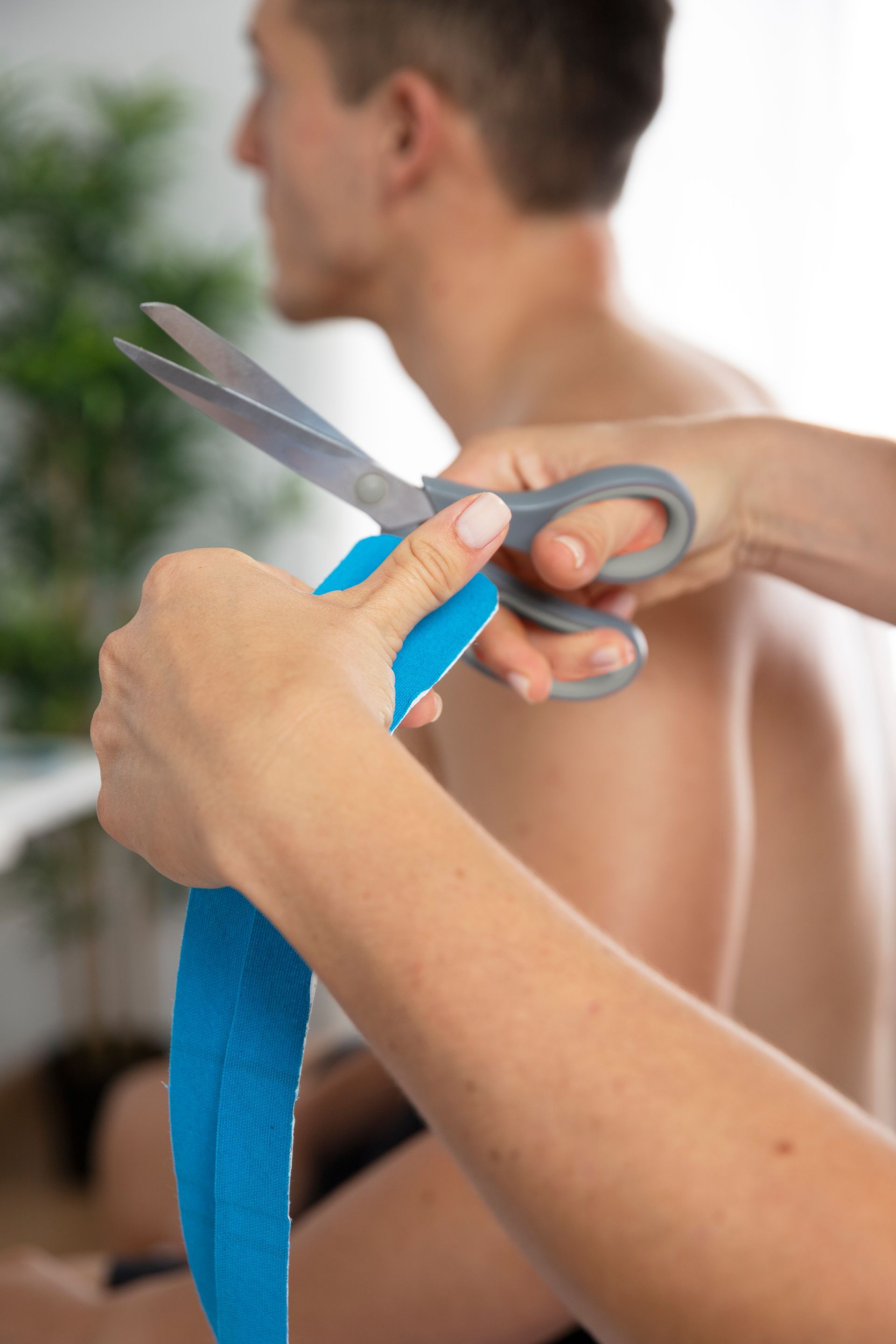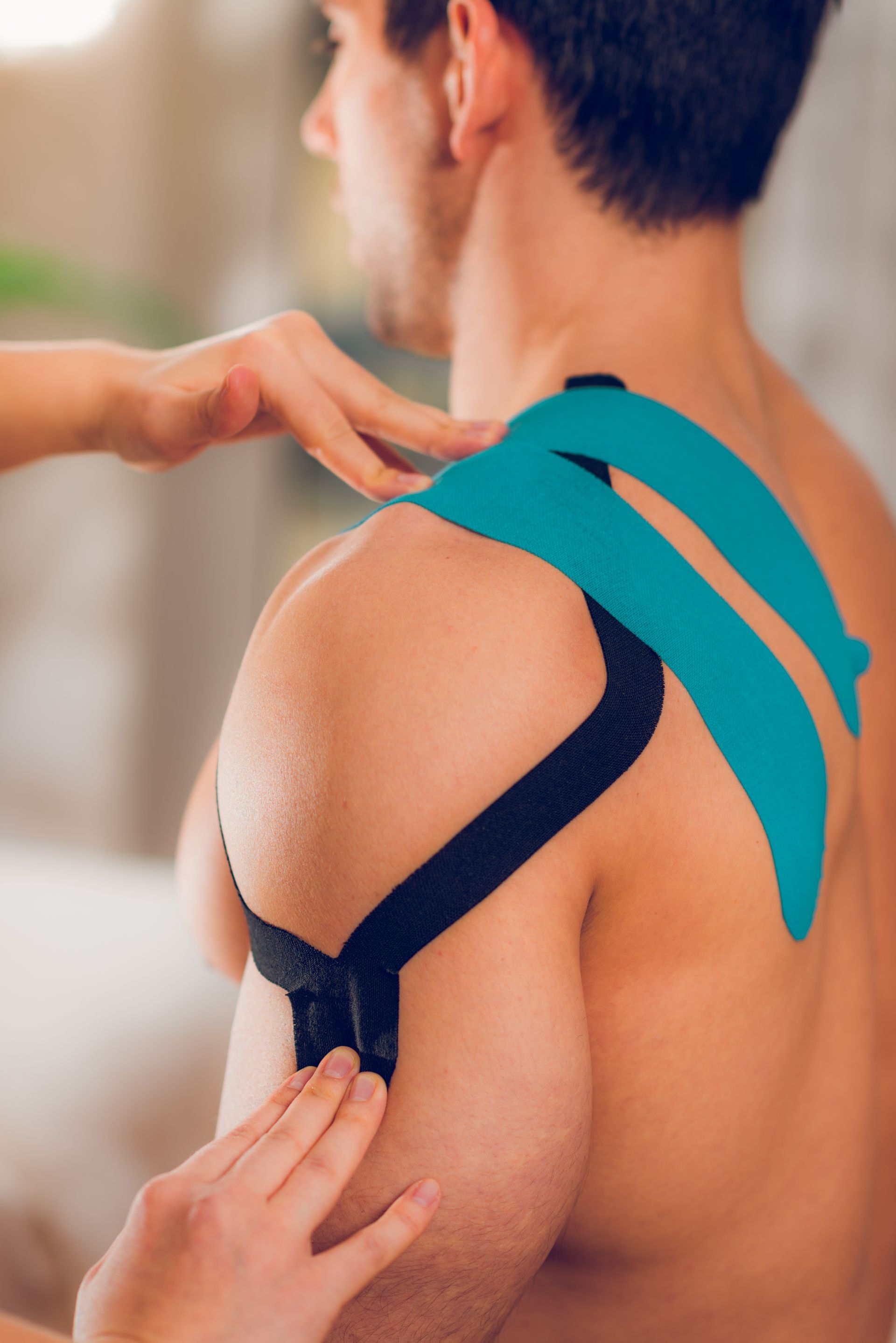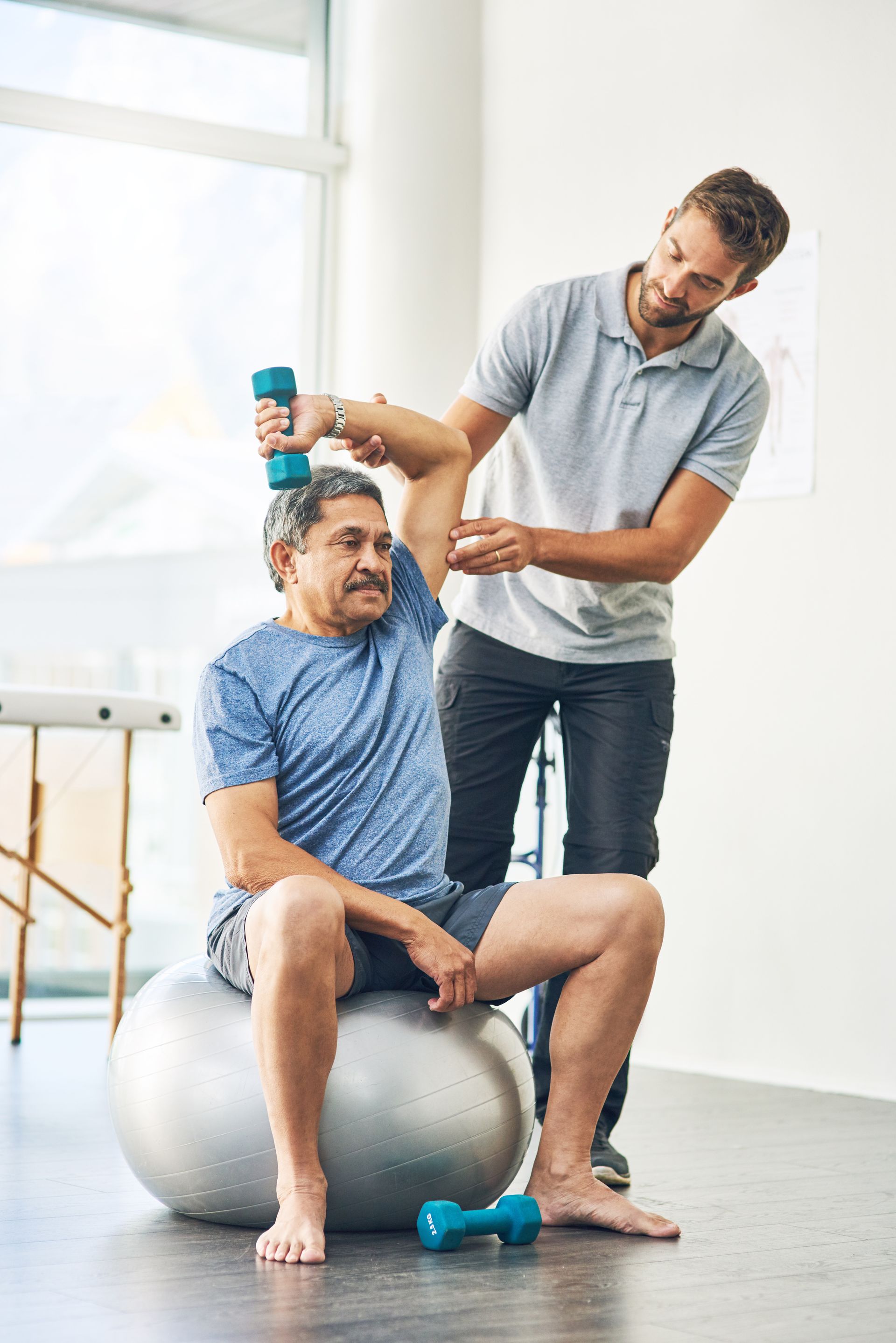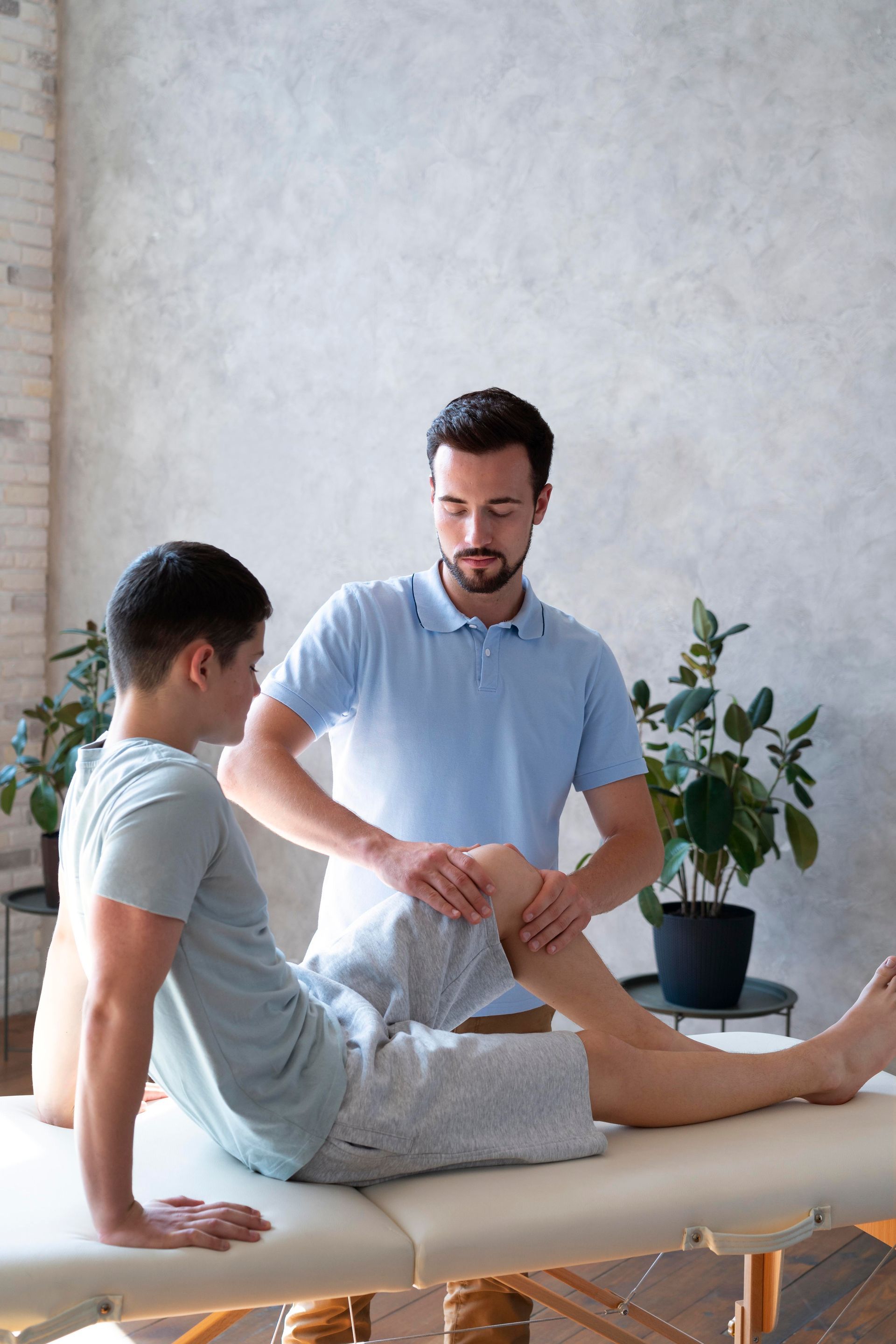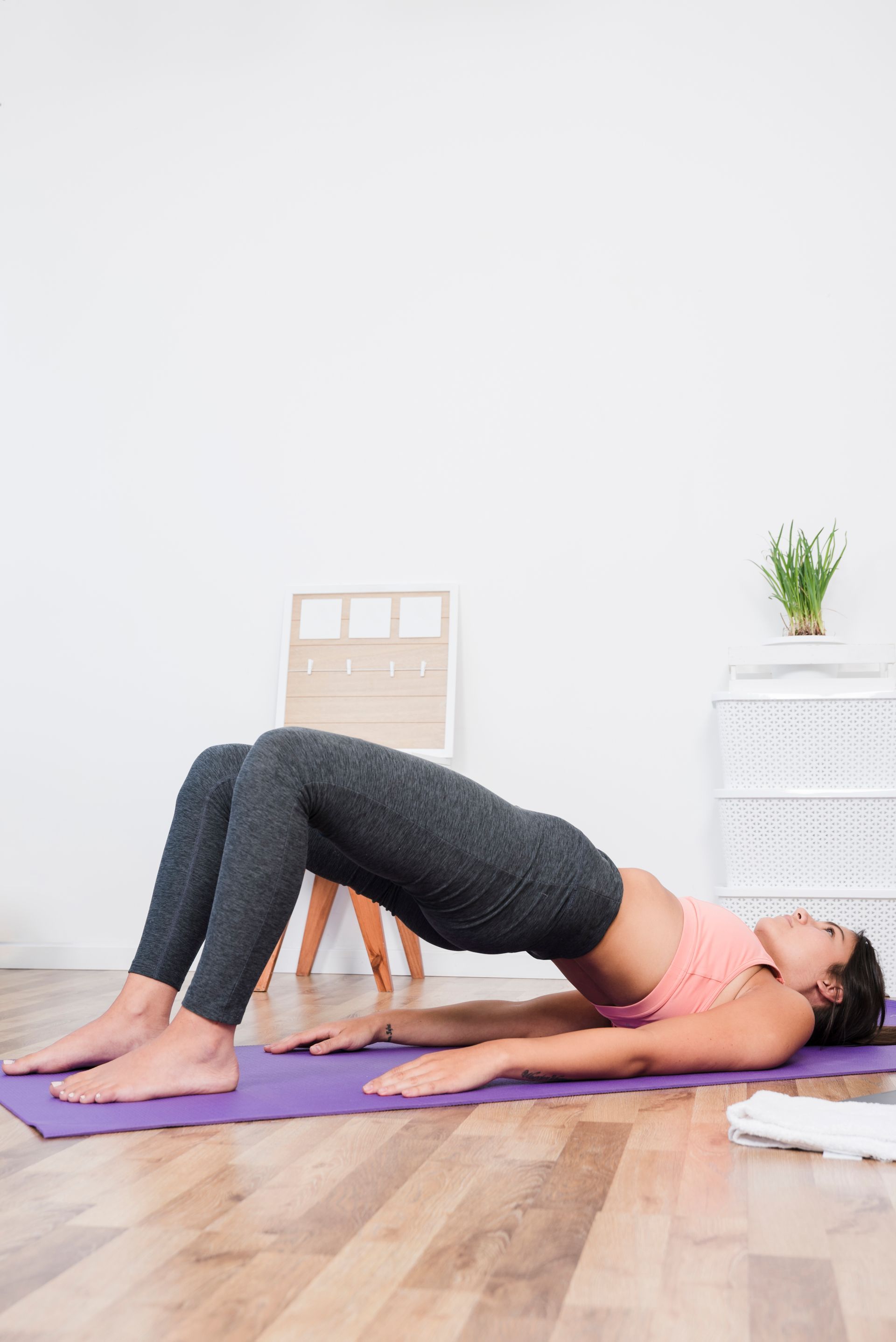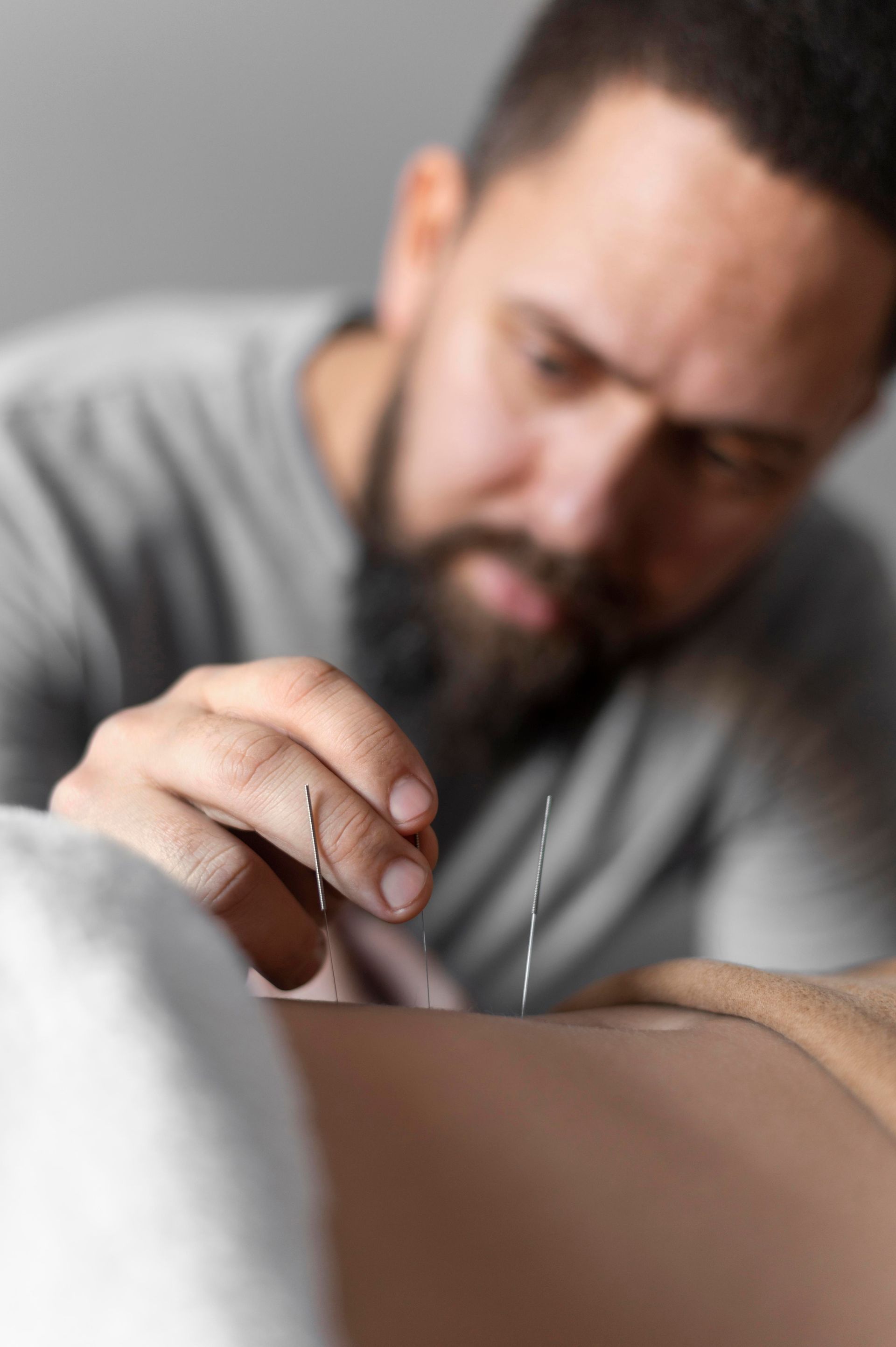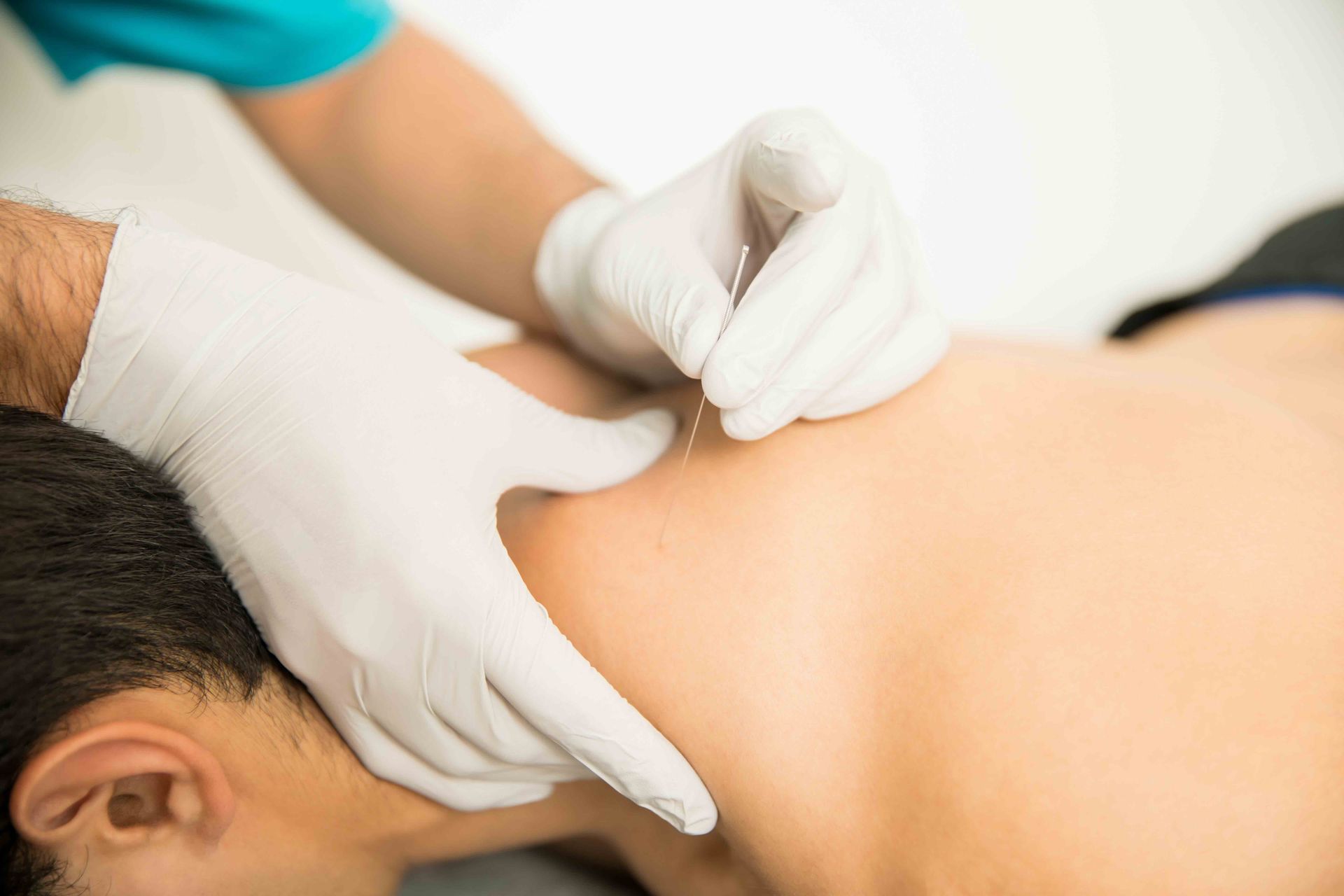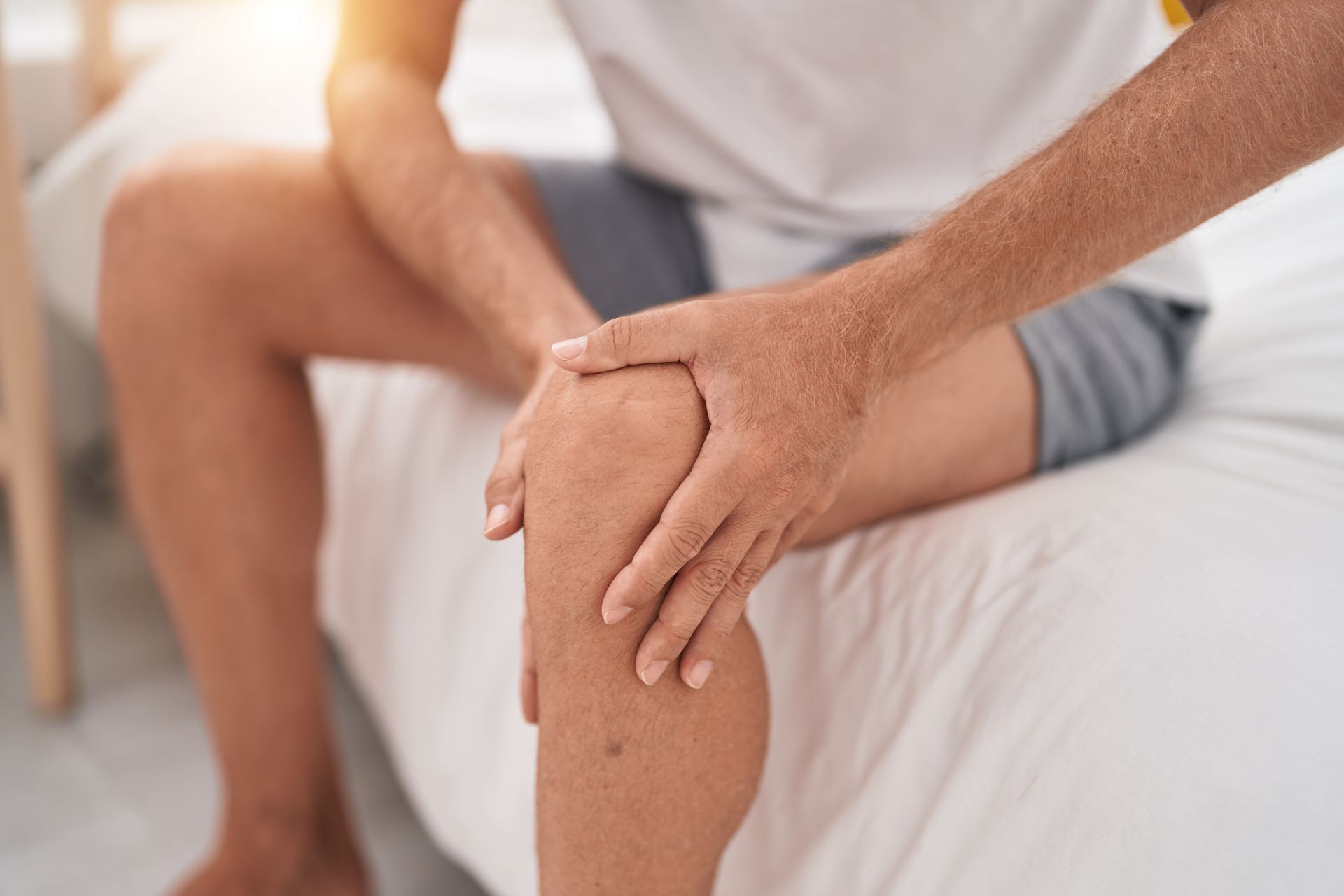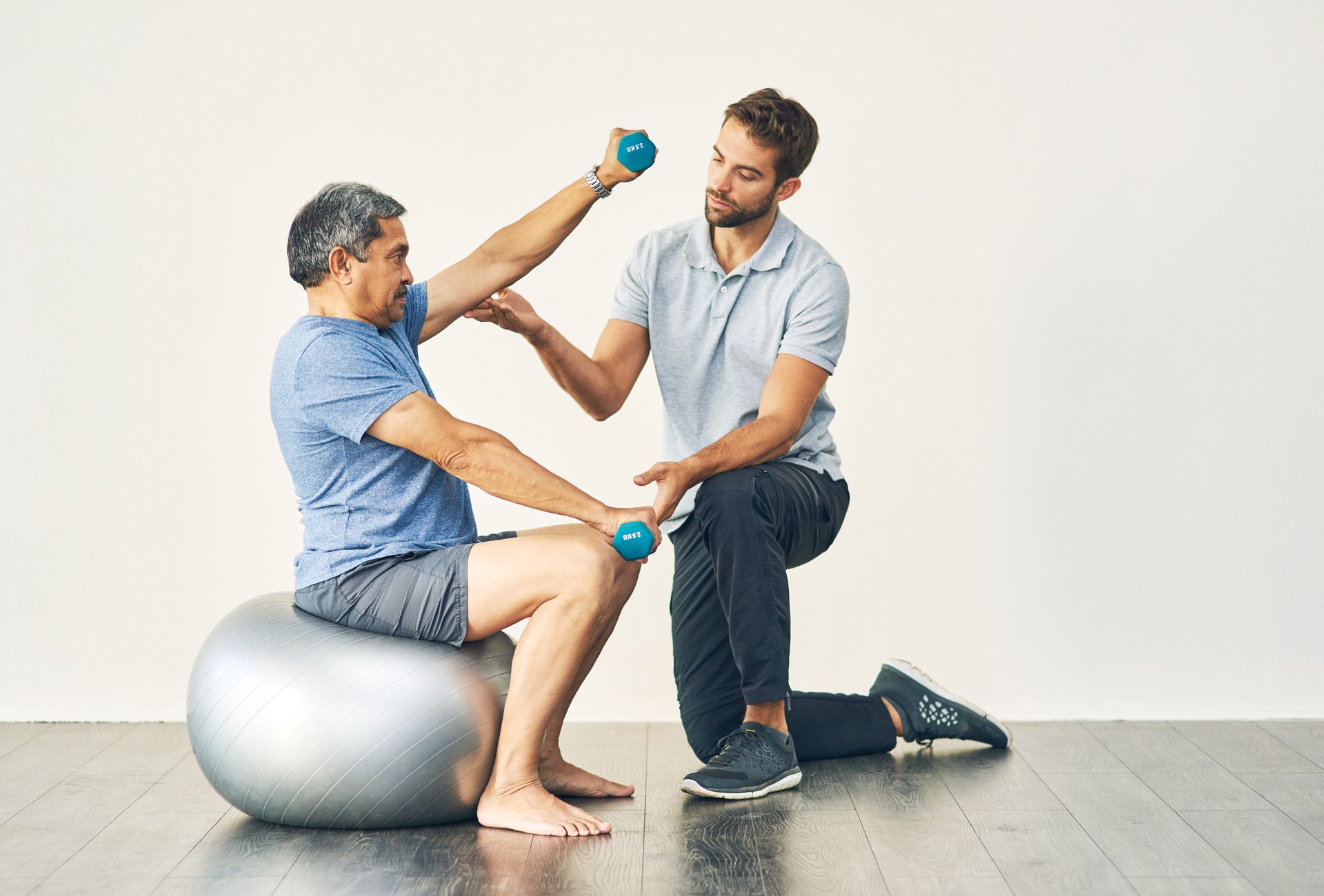Get In Touch
Call: (204) 261-7190
Fax: (204) 261-7191
Email: pembinaphysio@gmail.com
Business Hours
- Monday
- -
- Tuesday
- -
- Wednesday
- -
- Thursday
- -
- Friday
- -
- Saturday
- -
- Sunday
- Closed
Taping
Support Your Body's Healing Process with Our Professional Taping Services
At Pembina Physiotherapy & Sports Injury Clinic, we offer specialized taping services designed to support and stabilize muscles and joints during the healing process. Our experienced therapists are proficient in various taping techniques, which can help reduce pain, prevent further injury, and enhance athletic performance. Taping can also improve posture and facilitate proper movement patterns, promoting a faster and more effective recovery. Whether you're an athlete seeking performance support or a patient recovering from an injury, our taping services are tailored to meet your specific needs. Trust our team to provide you with the best possible care for your health and well-being.
About Kinesio Taping
Taping is a therapeutic technique used in physiotherapy to support and stabilize muscles and joints without restricting movement. At Pembina Physiotherapy & Sports Injury Clinic, we offer taping as part of our comprehensive treatment options.
Our therapists use specialized, elastic tape to provide support, reduce pain, and improve function in the affected area. Taping can be used as a standalone treatment or in conjunction with other therapies to enhance their effectiveness.
-
How It Works
Taping works by providing external support to muscles and joints, helping to maintain proper alignment and improve proprioception (the body's ability to sense its position and movement).
The elastic tape is applied to the skin over the affected area in specific patterns, depending on the injury and treatment goals. The tape can be left on for several days, providing continuous, therapeutic benefits.
-
Benefits of Kinesio Taping
The benefits of taping are extensive. It can help to reduce pain and inflammation, improve circulation, enhance muscular function, and provide support to injured muscles or joints.
By providing external support, taping can also help prevent further injury and promote healing. Furthermore, because the tape is flexible and allows for full range of motion, it can be worn during physical activity, making it particularly beneficial for athletes.
-
Who Is It For
Taping can benefit a wide range of individuals. It's particularly beneficial for athletes and those with musculoskeletal injuries or conditions. Whether you're dealing with a sports injury, chronic pain, or joint instability, taping could be a beneficial addition to your treatment plan.
However, as with any treatment, it's important to discuss your health history and current health status with a healthcare professional before starting. Our therapists will conduct a thorough assessment to determine if taping is the right treatment option for you.
Proper Care and Removal of Kinesio Tapes
Kinesio taping is a therapeutic technique used in physiotherapy to support and stabilize muscles and joints without restricting the body's range of motion. It's a popular method for treating a variety of physical disorders, from sports injuries to post-surgical recovery.
However, to maximize the benefits of Kinesio tapes and prevent potential skin irritations or injuries, it's crucial to understand the proper care and removal techniques.
-
Proper Application
The effectiveness of Kinesio tapes largely depends on their correct application. It's essential to have a trained physiotherapist apply the tape to ensure it adheres properly and provides the necessary support to the targeted area. The skin should be clean and dry before application, and the tape should be applied in the direction of the muscle or joint it's supporting.
-
Care During Wear
Once the Kinesio tape is applied, it can typically be worn for several days, even during showering or exercising. However, it's important to avoid soaking the tape for prolonged periods and to gently pat it dry after getting wet. If the tape begins to peel at the edges or causes discomfort, it should be removed.
-
Safe Removal
Removing Kinesio tape requires care to avoid skin irritation or injury. It's recommended to remove the tape in the direction of hair growth to minimize discomfort. Start by peeling the tape from an edge, slowly and gently pulling it back on itself rather than pulling it away from the skin. If the tape is difficult to remove or causing pain, applying a bit of baby oil or olive oil can help loosen the adhesive.
-
Post-Removal Skin Care
After removing the Kinesio tape, it's important to check the skin for any signs of irritation or adverse reaction. If the skin appears red, swollen, or itchy, it's advisable to consult a healthcare professional. To soothe the skin, apply a gentle moisturizer or aloe vera gel.
Frequently Asked Questions
At Pembina Physiotherapy & Sports Injury Clinic, we understand that you may have questions about taping, especially if you're considering it for the first time. We believe in empowering our clients with knowledge to make informed decisions about their health. To help you understand more about taping, we've compiled a list of frequently asked questions. These cover a range of topics from what to expect during a taping session to the benefits of taping. If you have additional questions, don't hesitate to reach out to us.
-
What conditions can taping help with?
Taping can help with a wide range of conditions, particularly those involving the musculoskeletal system. It's often used to treat conditions like sprains, strains, and other sports injuries. By providing external support, taping can help prevent further injury, promote healing, and improve function in the affected area.
However, the effectiveness of taping can vary depending on the specific condition and individual health factors. We recommend discussing your health history and goals with our therapists to determine if taping could be a beneficial addition to your treatment plan. Our team is experienced in assessing individual health needs and can provide guidance on the most effective treatment options.
-
Can I do my normal activities while wearing the tape?
Yes, one of the benefits of taping is that it provides support and stability without restricting movement. The tape is flexible and allows for full range of motion, so you can continue with your normal activities, including physical exercise, while wearing the tape.
However, it's important to listen to your body and avoid any activities that cause pain or discomfort. If you notice any changes in how the tape feels or if it begins to peel off, it's best to contact us for advice.
-
Will my insurance cover the cost of taping?
Taping is incorporated as a part of a physiotherapy session at Pembina Physiotherapy & Sports Injury Clinic. Many insurance providers may cover the cost of physiotherapy, which would include taping, if it forms part of your insurance plan. We recommend confirming with your insurance provider to understand your coverage details. We can provide a comprehensive receipt for your physiotherapy sessions that you can submit for potential reimbursement. If there are any queries about the cost or payment procedure, feel free to get in touch with us. We strive to make the process as straightforward and hassle-free as possible for our patients.
-
Can I apply the tape myself at home?
While it's possible to apply tape yourself at home, we recommend having it done by a trained professional, especially if you're new to taping. Our therapists are trained in various taping techniques and can ensure that the tape is applied correctly for maximum benefit. They can also provide guidance on how to safely remove the tape.
If you're interested in learning how to apply tape yourself, talk to your therapist. They can provide instructions and demonstrations to help you learn the correct technique. Remember, incorrect application of the tape could lead to skin irritation or not provide the desired support, so it's important to learn the correct method.
Our Services
Pembina Physiotherapy & Sports Injury Clinic offers services like massage therapy, acupuncture, dry needling, custom orthotics, and manual therapy. We also provide specialized treatments for sports injuries, post-surgical recovery, and conditions requiring pelvic floor, vestibular, and pediatric physiotherapy. Our goal is to enhance your health and quality of life through comprehensive, personalized care.
-
Physiotherapy
Button -
Manual Therapy & Manipulation
Button -
Sports Injury
Button -
Cupping
Button -
Taping
Button -
Exercise
Button -
Post-Surgical Treatment
Button -
Pelvic Floor Physiotherapy
Button -
Vestibular Physiotherapy
Button -
Pediatric Physiotherapy
Button
Acupuncture
ButtonDry Needling
ButtonPost Op Hip & Knee Class
ButtonCustom Orthotics
ButtonMassage Therapy
ButtonExercise Therapy at Pembina Physiotherapy & Sports Injury Clinic
At Pembina Physiotherapy & Sports Injury Clinic, we offer personalized exercise therapy programs to aid in recovery and enhance overall health. Our expert therapists design exercises to improve strength, flexibility, balance, and coordination. Whether you're recovering from an injury, managing a chronic condition, or looking to improve your fitness, our exercise therapy can help. We aim to empower you to take an active role in your health, promoting long-term wellness and preventing future injuries.
Pembina Physiotherapy & Sports Injury Clinic
Address
Phone
(204) 261-7191
Fax
Business Hours
- Monday
- -
- Tuesday
- -
- Wednesday
- -
- Thursday
- -
- Friday
- -
- Saturday
- -
- Sunday
- Closed

